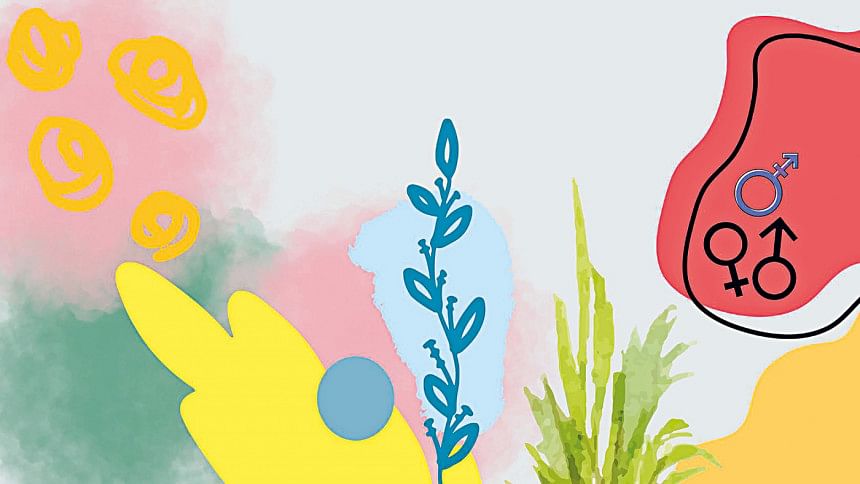The Constitutions as gendered documents

Constitutions are often presumed to be concerned with the public power and public life of a nation. This, however, is a flawed presumption, based on what feminist scholars describe as the 'public-private dichotomy' whereby only the public sphere is seen as concern of the Constitutions and the private sphere as protected territory. Further, Constitutions are often written and implemented by male bodies— constituent assemblies, executive, and judiciary— with little or no participation or informed consent of the women. This is why feminist scholar Catharine MacKinnon describes Constitutions as a 'form of particular male legal intervention'.
The fact, however, is that Constitutions deeply impact the exercise of private power amongst citizens. The gendered violence against women inside the home, for instance, is certainly a constitutional concern. This is why feminist movement(s) across the world have recognised the gendered impact of the Constitutions. Feminists have struggled and demanded equality with, within (and without) the Constitutions.
One way through which Constitutions have attempted to challenge the gendered hegemony and patriarchal power is through the non-discrimination and equality guarantees. For instance, Article 14 of the Indian Constitution provides equal protection of law. Article 15.1 guarantees that there cannot be any discrimination based only on the ground of sex. Article 15.3 provides that the state could make 'special provisions' for women and children. Bangladesh Constitution, very similarly, provides for equality before law (Article 27), guarantee of non-discrimination on grounds 'only' of sex (Article 28.1, Article 28.3), special provisions for women and children (Article 28.4), and equal opportunity in public employment (Article 29.1).
Despite these guarantees, in the Indian context, discriminatory laws could not be readily challenged. This is because the courts took a rather narrow approach to the equality guarantee (ie the formal approach) of equality. Thus, for instance, the court interpreted the word 'only' under Article 15(1) to mean sex and sex alone. Thus, in Air India v Nargeesh Mirza case, the court refused to recognise discriminatory employment conditions against Air Hostesses based on age of marriage and first pregnancy on the ground that these conditions were not based on 'sex alone'. Instead, they were based on conditions of suitable age of marriage, domestic responsibility of women, and family planning. The court did not enquire whether these 'other considerations' themselves were based on preconceived notions of women's gendered role within family. Similarly, in another case, the court denied women the right to hold employment in male prisons on the ground that it is not based on sex discrimination but on other conditions, such as safety of women. The court did not enquire whether the notions of safety themselves are a code word for restricting women's rights. This interpretation also meant that women who faced intersectional discrimination based on their multiple intersecting identities of caste, religion, sexual orientation, class, were not deemed protected under the non-discrimination guarantee.
These understandings are changing today. In recent years, the Indian Supreme Court has articulated a substantive vision of equality that requires the court to enquire whether a provision is causing/perpetuating subordination and disadvantage to women based on the historical and stereotypical notions of women's role. Thus, for instance, the court in Joseph Shine v UOI, found the Indian Penal Code section 497, which criminalised adultery, unconstitutional on the grounds that it was based on stereotypical notions of women's agency. Under the provision, women could neither be prosecuted, nor she could bring a case against her adulterous husband. Instead, under the provision only a husband could bring case against another man for 'defiling' his wife. The court held that the provision stereotypes women as eternal victims lacking any agency or capacity to take decisions for themselves. Similarly, in Navtej Johar v UOI, Justice DY Chandrachud rejected the earlier interpretation that the word 'only' under Article 15(1) has to be interpreted as 'sex and sex alone'. Instead, the judge held that any form of discrimination, direct or indirect, if based on stereotypes, will be discriminatory. This rejects the earlier notion that since women are inherently different from men, they can be treated differently. The question is not of sameness or difference, rather of subordination, power, and hierarchy.
Further, in Justice KS Puttaswamy v UOI, the court rejected the earlier notions of privacy which entrenched patriarchal power within the domestic sphere. Instead, a nine-judge bench of the Indian Supreme Court held that Indians have a right to privacy, understood as bodily and mental integrity, decisional autonomy, and informational autonomy. Under such an articulation of privacy, women are seen as equally capable of agency and choice, and any action in private that harms women's autonomy cannot be held constitutional.
What this journey of court cases shows us is that the meaning of constitutional equality is not given; it is to be constantly constructed through feminist interpretations, movements, and continuous questioning of the taken-for-granted presumptions that underlie the notions of power within a Constitution. Constitutions can make or break conditions of equality and thus, have to be constantly negotiated with.
The writer is BCL graduate from the University of Oxford.

 For all latest news, follow The Daily Star's Google News channel.
For all latest news, follow The Daily Star's Google News channel. 



Comments